A self-described early adopter, Kendall Christiansen previously had helped lead a movement to permit solar panels on the roofs in his historic Brooklyn row-house neighborhood. As his 35-year-old hot-water boiler neared the end of its life, it was a natural decision to convert to a more efficient heating and cooling system—one that was as close to fossil-free as possible.

Fokussiert/ADOBE STOC
Christiansen and his wife, Carol Shuchman, chose to replace the old hot-water boiler with a whole-house, air-source heat pump system. Commonly referred to as mini-splits and more accurately as inverter systems, air-source (or air-to-air) heat pumps run solely on electricity. Typically operating at lower temperatures than traditional forced-air or hot-water systems, they can be three to four times as efficient. Some work in temperatures as low as -20°F, too.
“They call them cold-climate heat pumps,” says Matt Crowley, the crew chief for Green Team Long Island, the installer for Christiansen’s 1910 limestone row house. He has seen a flood of residential and commercial customers moving to the all-electric heat pumps. “Basically, we try to get people off fossil fuels.”
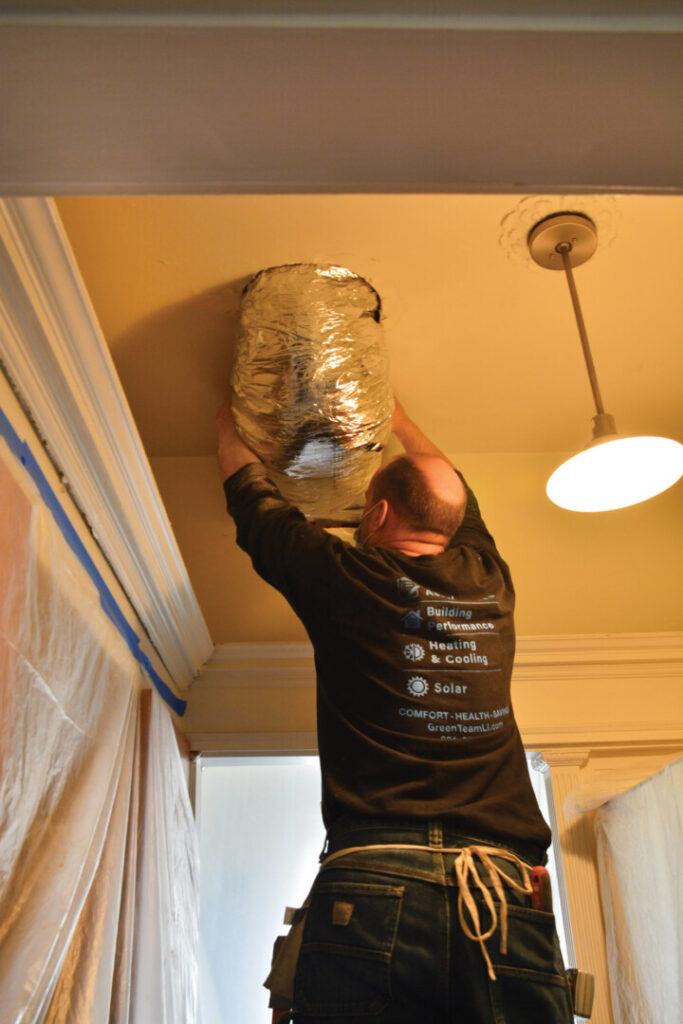
Jim Polson
Once, we heated our homes with coal. Then came fuel oil, followed by natural gas. Now Americans are finding ways to heat and cool our homes without directly burning fossil fuels, sometimes without ties to any fossil fuels at all. We’re saving money as well.
Pro tip: A 2018 study in California found that air-source heat pumps could reduce household greenhouse-gas emissions from heating by as much as 54 percent. So besides homeowner savings on fuel costs, the environment also benefits.
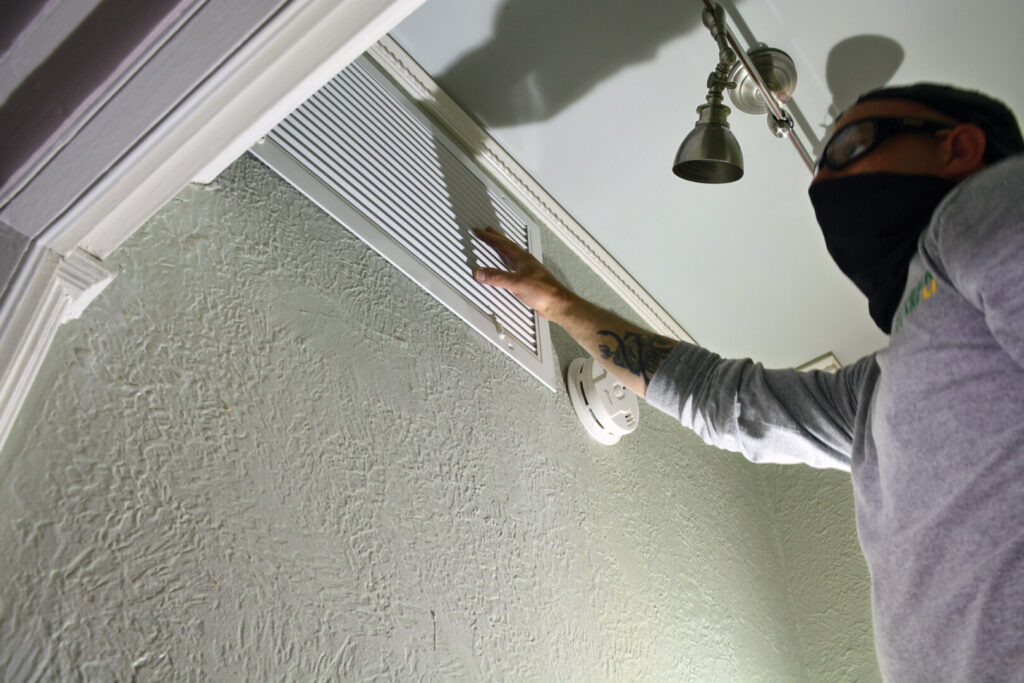
Jim Polson
A key feature of these HVAC systems is inverter technology that takes advantage of ambient air temperatures to heat and cool a house. They operate at cooler temperatures than a traditional forced-air furnace or hot-water boiler, so they use less energy. In addition, they are quieter and provide heating and cooling at a consistent level, without the stop-and-start cycles of older HVAC systems.
One-off mini splits caught on initially because they could be used in locations that were completely ductless (think air handlers in restaurants in 100-year-old buildings). Later innovations allowed these heat pump-driven units to serve ducted buildings, particularly in new construction and renovation. Retrofitting a whole-house system into an existing dwelling such as the Christiansen row house, which has party walls and intact period millwork, and is completely ductless, was particularly challenging.

Jim Polson
See a meticulous retrofit
Inverter systems are powered by a compressor containing a condensing unit (the heat pump), typically installed outside the house. The Christiansen project required two such units. The heat pumps connect to distribution units strategically placed inside the house—usually just a few feet from the room(s) to be served. Finding space for units roughly the size of a large, old-fashioned suitcase was essential to making the system work. Luckily, the ceilings were 11 ½’ high, and there were plenty of closets as well as small, high-ceilinged passageways between larger rooms.
The installers created platforms in the top 2′ or so of these closets and passageways, essentially creating small attics for the distribution units. (Because of the high placement, there was no sacrifice of usable space: a good thing, since one of the distribution units went in the pantry closet.) As the distribution nodes went in, other team members made strategic cuts and pushed flexible ductwork through walls that connected to outlet and return vents. Vents were cut into place without disturbing period wall trim.
The installation took nearly two weeks, but for Christiansen and Shuchman, the benefits were many. Not only did they get a substantial tax rebate from the state of New York (rebates can range from a few hundred to thousands of dollars, depending on location), but also the new setup supplies air conditioning as well as heating. For years, Christiansen had laboriously installed and removed five window air conditioners each season, plus two floor units. “We both work from home so this should be a great improvement over those,” he says.
As part of the system upgrade, he swapped out an existing 60-gallon water heater for a 65-gallon combination boiler that can supplement the air-source heat pump. He’d previously installed solar panels on the roof, which had already significantly cut into power bills.
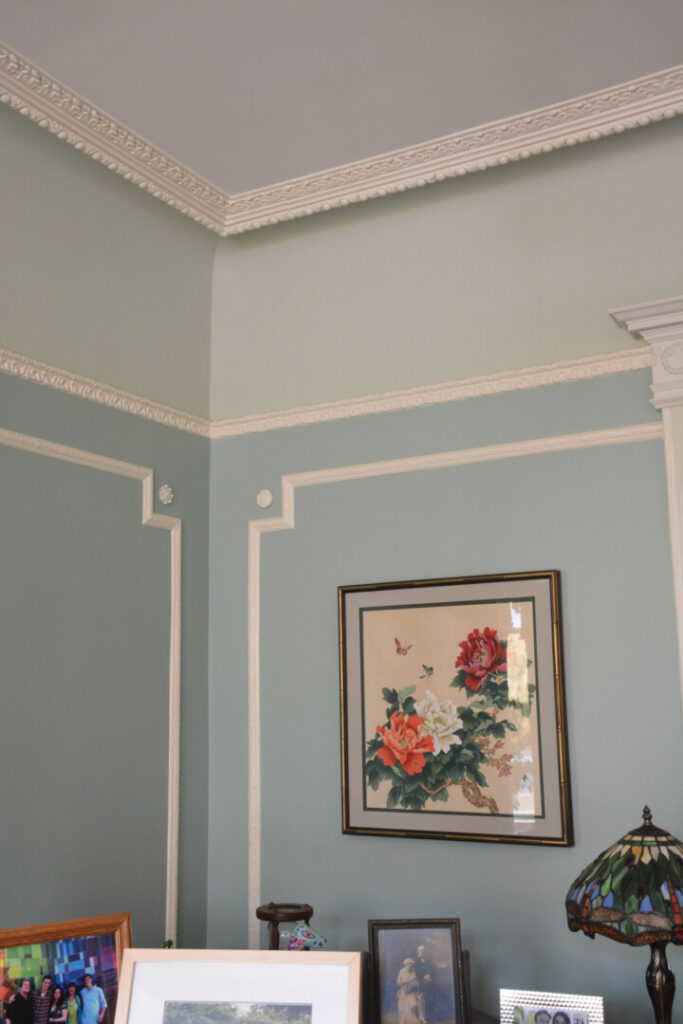
Kendall Christiansen
Although Christiansen and Shuchman have spent less than a year with the new system, they can tell that it’s saving them money. And “summer comfort has been outstanding,” Christiansen reports.
As for the existing, historic radiators in the house, the couple decided to keep them as a decorative nod to the past. The five window air conditioners are nowhere in sight.
Since inverter heat pumps transfer heat from one place to another rather than generate it through combustion of fossil fuels, they’re up to four times more efficient than a natural-gas furnace. They usually come with higher upfront equipment and installation costs, up to three or four times the cost of simply replacing a furnace or boiler. Still, the U.S. Dept. of Energy estimates a low-temp heat pump can save a homeowner hundreds of dollars a year.
Energy savers
Modern upgrades to keep the house comfortable year-round.
Cost Slasher

Engineered in Germany, the Accelera 220 and 300 E hybrid heat-pump water heaters are designed to provide comfort at the lowest possible energy cost. Time-tested in Europe, the Accelera can reduce hot water costs by 80 percent. Stiebel–Eltron, stiebel-eltron-usa.com
Protect Your Treasures
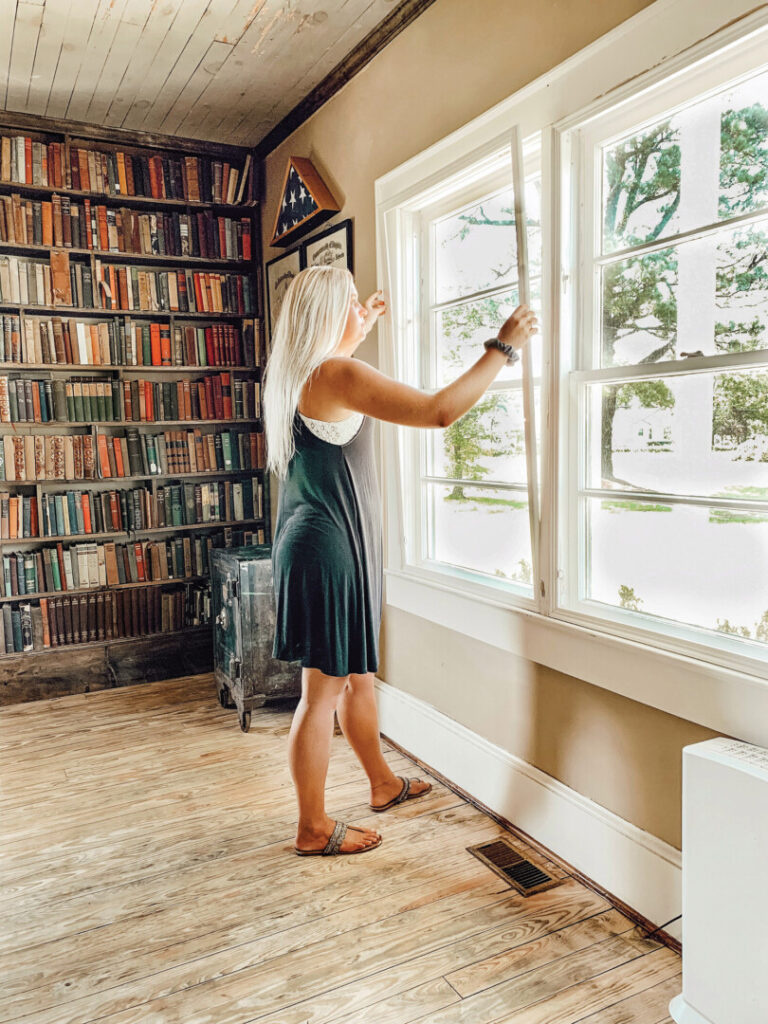
Museum-grade interior acrylic compression windows block drafts and noise, and also filter out 98 percent of damaging UV rays. These nearly invisible windows offer the same clarity as standard-grade interior storms and are easy to install. Free estimates. Indow, (503) 284-2260, indowwindows.com
Standby Power
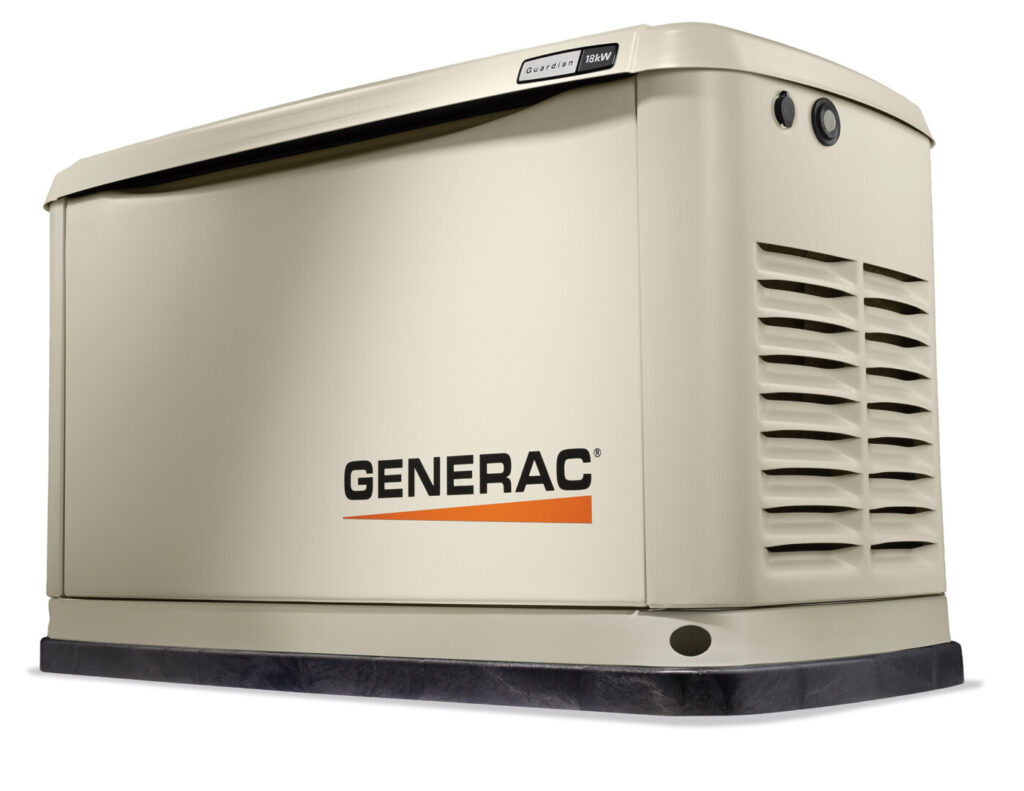
Power outages are increasingly common nationwide. One of the quietest backup generators, the Guardian 18kW keeps lights and appliances powered during an outage, or whole-house coverage when paired with a load-shedding switch. Wi-Fi-enabled; runs on propane. Generac, (888) 436-3722, generac.com
Draft Stopper
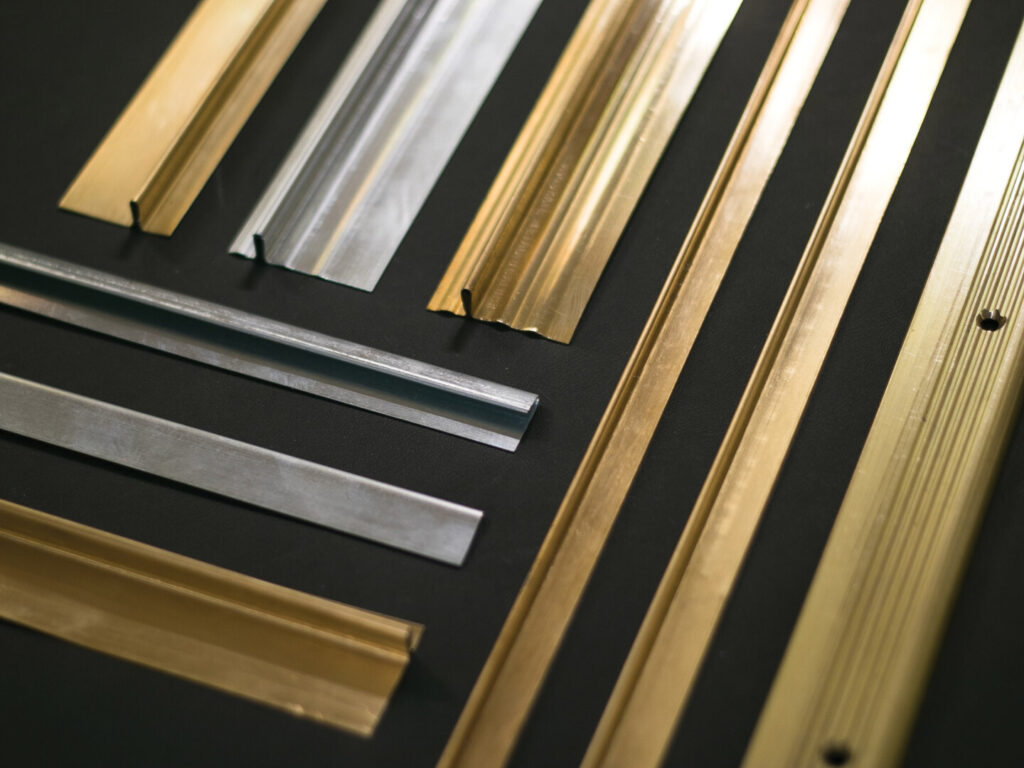
Weather-stripping windows and doors prevents cold air infiltration, lowering your energy bill. Weather strip in bronze or zinc (bronze only for doors) comes in interlocking, door sweep, hinged-door saddle strips, and more. $1.50 to $6 per foot. Accurate Machine Made, (207) 222-05480, accuratemachinemade.com
Hot Water Anywhere
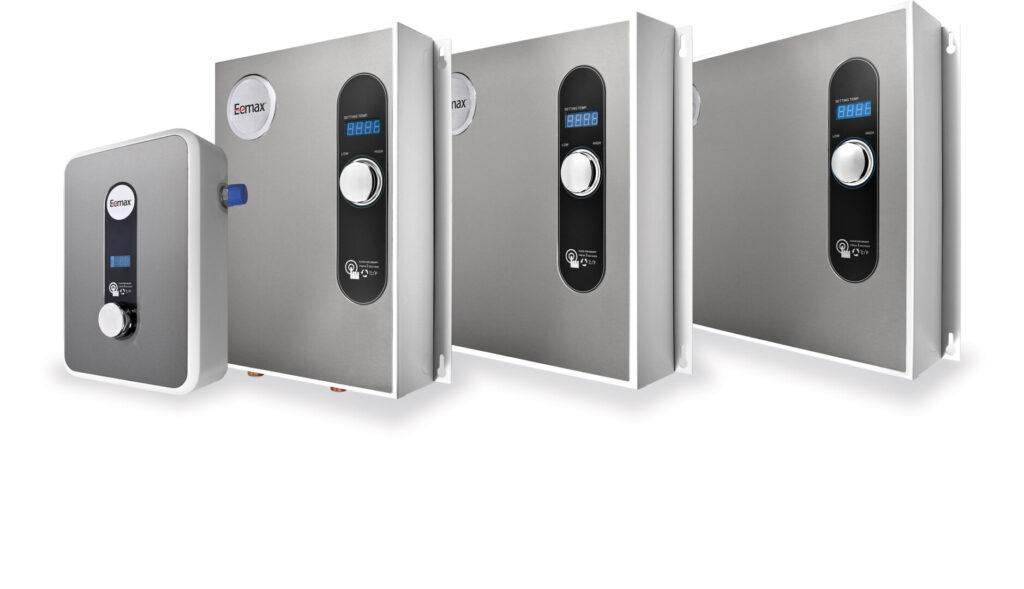
HomeAdvantage II tankless water heaters provide endless hot water: at one location, or throughout the house. These space-saving, ventless electric water heaters are calibrated to work with inlet temperatures for your climate, in sizes from 8 to 36 kW. Eemax, (203) 267-7890, eemax.com
Find a Pro
In some areas of the country, it’s getting harder to find insulation contractors willing to blow cellulose insulation into exterior walls. Owens Corning has a handy “find a contractor” link to help you locate a full-service insulation pro (owenscorning.com/en-us/insulation/find-a-professional).

Jim Polson
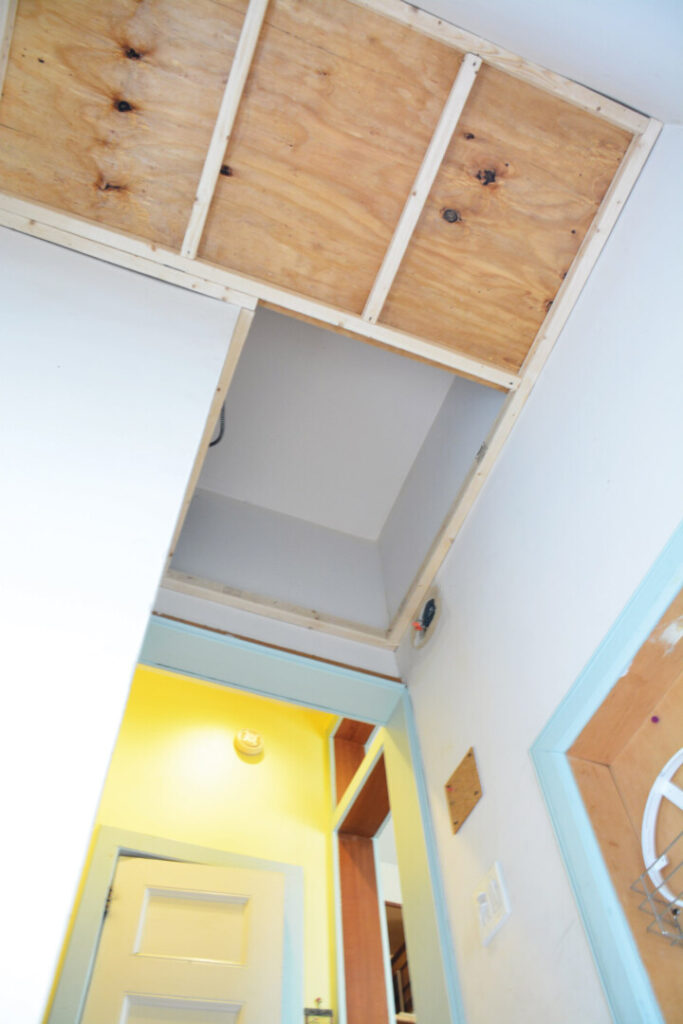
Jim Polson
New Ducts in an old house
When Kendall Christiansen and Carol Shuchman decided to add a whole-house air-to-air HVAC system, they had to find space to accommodate distribution units, flexible ductwork, and inlet and outtake vents without permanently disturbing the interior appearance of their 1910 limestone row house. The crew who installed the Fujitsu Halcyon system was able to work around most of the original period millwork and mouldings. Once installation was over, the couple had a long-time handyman repair and conceal any visible evidence of the work. “He knows how to make it look like it’s never been touched,” Christiansen says.
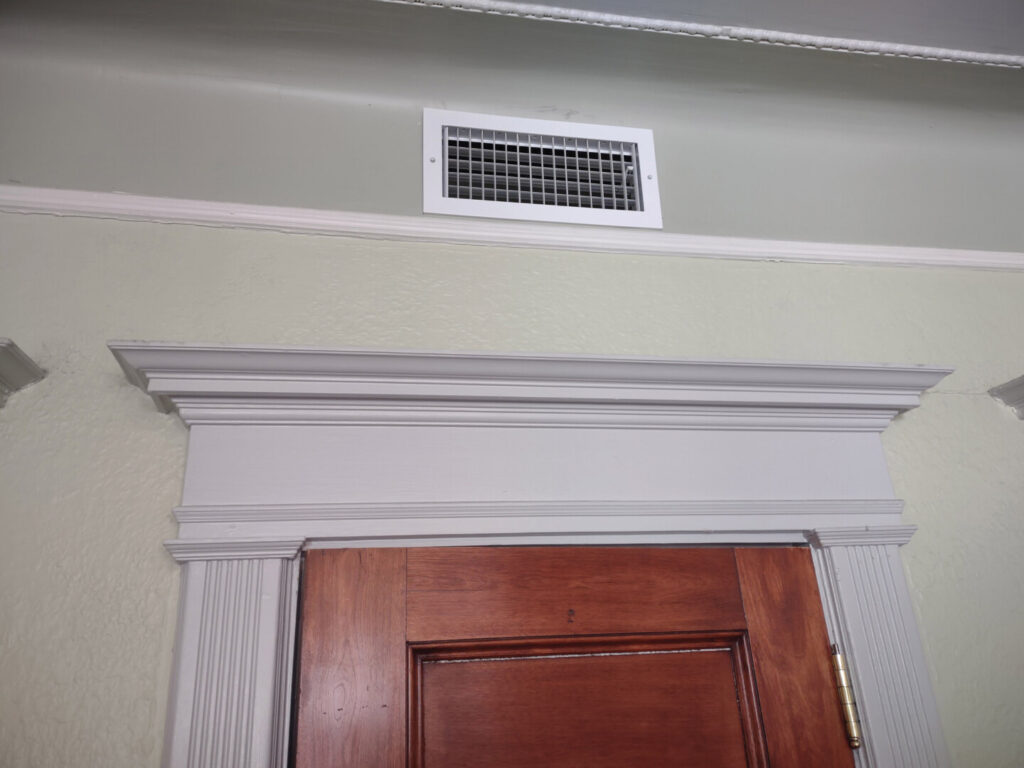
Insulate first!
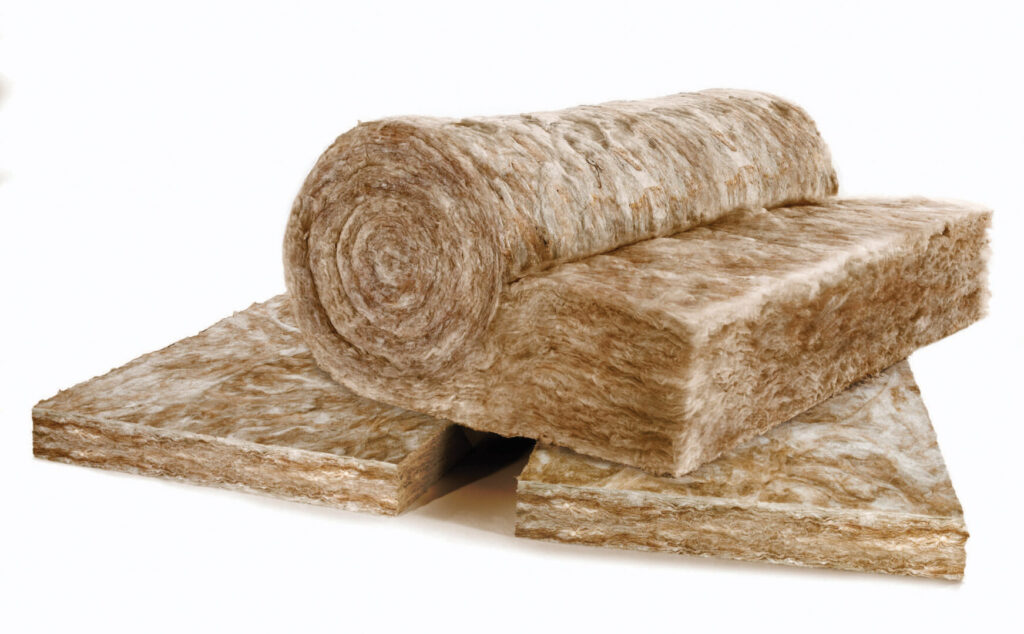
Converting an existing forced-air system to an inverter heat-pump system isn’t necessarily straightforward, in an existing house. First, consider that most inverter-based systems are going into well-insulated new construction, where the entire system (furnace, piping, vents, and wall and ceiling units) can be designed for utmost efficiency. Then consider that the insulation in most older houses is spotty or nonexistent,
and existing ductwork may not be insulated. Since the heat produced by the furnace in an inverter system is significantly lower than a typical forced air system—110 degrees versus 135 degrees, for example—you’re likely to get inadequate heat, or cold spots at the far reaches of the duct runs. Add to that, an inverter system must work harder to convert energy from the outside air when it’s cold outside. Have a contractor insulate areas where it’s best able to keep cold or hot air out of the house. In a cold climate, for example, insulate inside the perimeter of the foundation. In a hot climate, add insulation in the attic. Be sure to insulate functioning ductwork, too.
Air-to-Water HEAT
Your house not a good fit for an air-to-air heat-pump system? Consider an air-to-water heat pump to supplement the heat, supply hot water in summer, and bring air conditioning to your home.
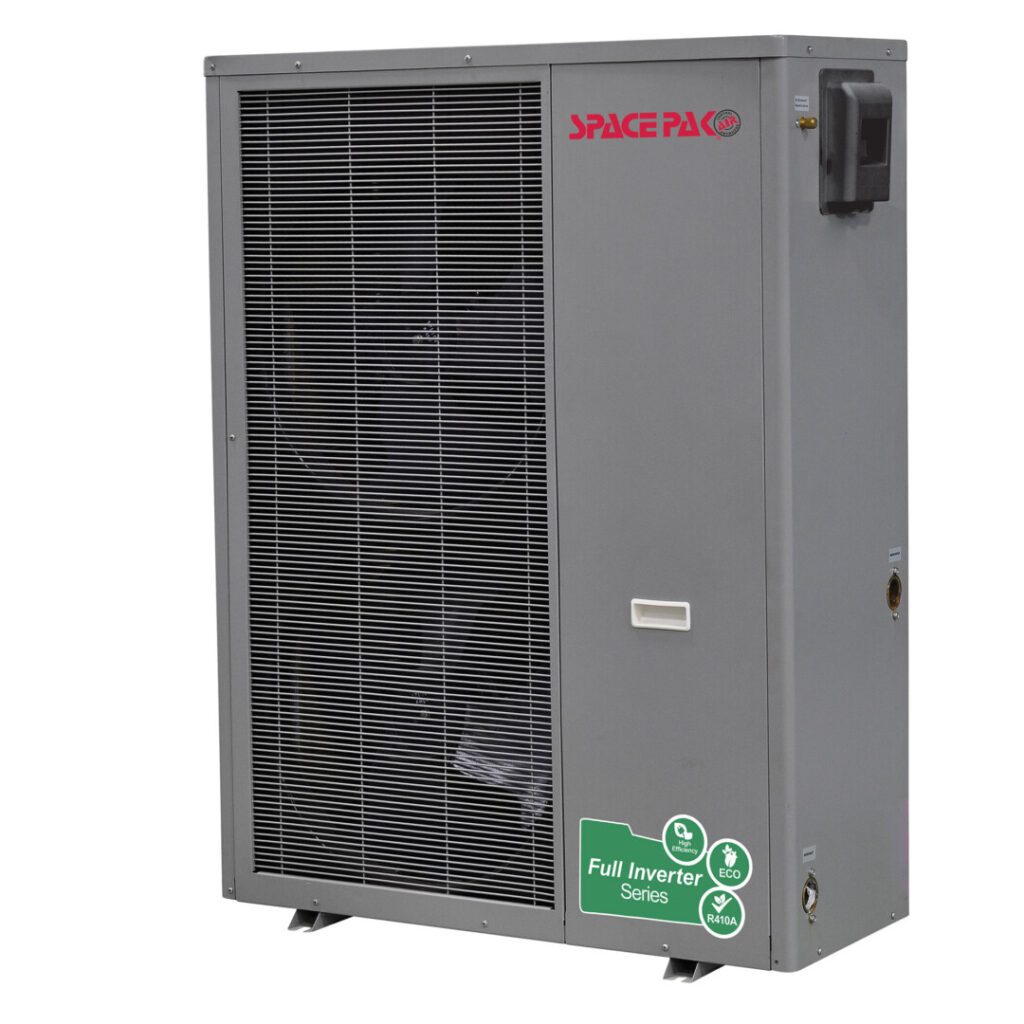
Air-to-water heat pumps work similarly to air-to-air heat pumps, except that the low-temperature heat extracted from the outdoor air is used to heat water inside a hydronic condenser before delivering it indoors. These are an ideal retrofit for any hydronic HVAC system designed for low water temperatures, such as newer hydronic baseboard or in-floor radiant systems. But they are not a seamless retrofit for older high-temperature boilers, says Jim Bashford, national sales and training manager for SpacePak, which has offered Solstice air-to-water systems since 2011.
That said, air-to-water heat pumps can make a significant difference in both comfort and cost as a supplement to existing heating systems, while adding all-important air conditioning in the summer months. (They can also supply hot water during the warm season.) In shoulder seasons, a heat pump allows you to turn an older forced-air or hot-water boiler down, from, say, 140 to 120 degrees. That way, the boiler doesn’t kick on when the temp drops below 60°—the heat pump does. The difference can be significant in areas where fuel oil or propane heating bills run $500 to $1,000 per month. “If I only have to run my expensive heating source six weeks out of the year, instead of four months,” Bashford says, “that’s a considerable savings.” He recently installed an air-to-water system to supplement a propane heater in his home in New York’s Hudson Valley. His propane use dropped by four-fifths, saving him several hundred dollars per month. His electric bill increased by only about $20 per month.
For the next hundred years
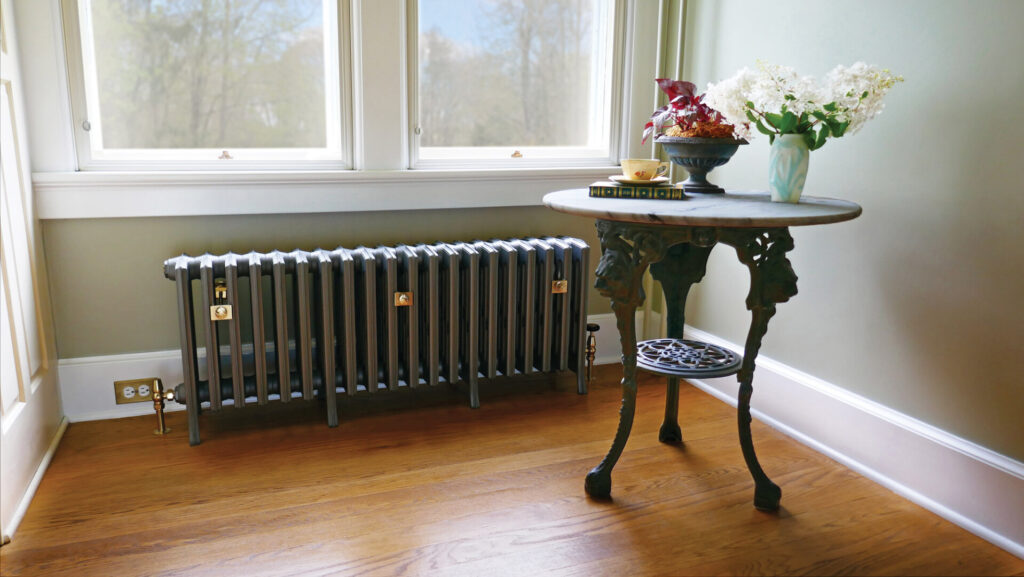
Jim Polson
When Bill Ticineto and Jill Chase moved into a rambling 1894 shingled cottage in northwest Connecticut a few years ago, there was little to no insulation and the house was heated with convector steam radiators. The house had all the charm they could desire, but that first winter was miserable. The convection units got hot quickly, but lacking thermal mass, they cooled off as soon as the heat source stopped. Installing interior compression windows from Indow in especially drafty locations helped, but the couple knew they were looking at a major heating-system overhaul.
They began by insulating the entire house, and ended with the installation of a state-of-the-art Viessmann condensing boiler that can also supply domestic hot water. “We were able to use the existing hot/cold pipes from the previous steam system,” Ticineto says, “which saved a lot of money.”
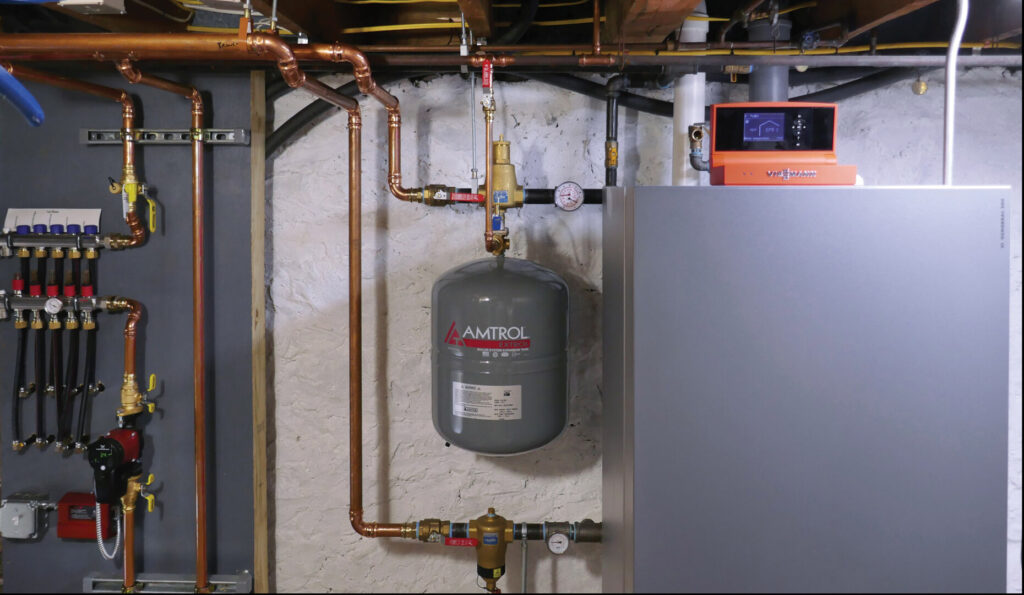
Jim Polson
The new condensing boiler is a two-pipe system with four zones. The boiler uses an exterior thermostat to monitor and predict future heat demand, keeping the heat in the house both consistent and comfortable. Ticineto and Chase very much wanted to install period-look radiators—the house appears never to have had any—and found a source from Castrads, which makes cast-iron radiators in England and sells them in the U.S.
The upfront expense ran into tens of thousands of dollars, but Ticineto says it was worth it. “The house maintained an even temperature all winter, no hot spots, no noise, and the fuel bills were very reasonable.”
Besides that, fuel costs for heat, hot water, cooking, and even the clothes dryer dropped to less than 25 percent of the first winter’s heating bill. That means the couple are on track to recoup their outlay in 10 years or sooner. “I don’t think I could be happier with the radiators and new heating system. It has performed better than I expected,” Ticineto reports.
Pro tip: Condensing boilers save energy by heating water to the lowest temperature necessary. Outdoor sensors direct the boiler to increase or decrease water temperature depending on weather changes.
Greener energy

Going all-electric does not, of course, mean the energy supplying a house is totally fossil-free. Electricity is mass-generated from any number of sources, from coal to nuclear power plants. Encouragingly, energy generated by “clean” sources such as wind, solar, geothermal, and hydroelectric now makes up better than 10 percent of the U.S.’s energy needs. At the household level, eliminating fuel oil, and LP gas and propane use, typically means not only a smaller carbon footprint, but significantly lower energy costs.







